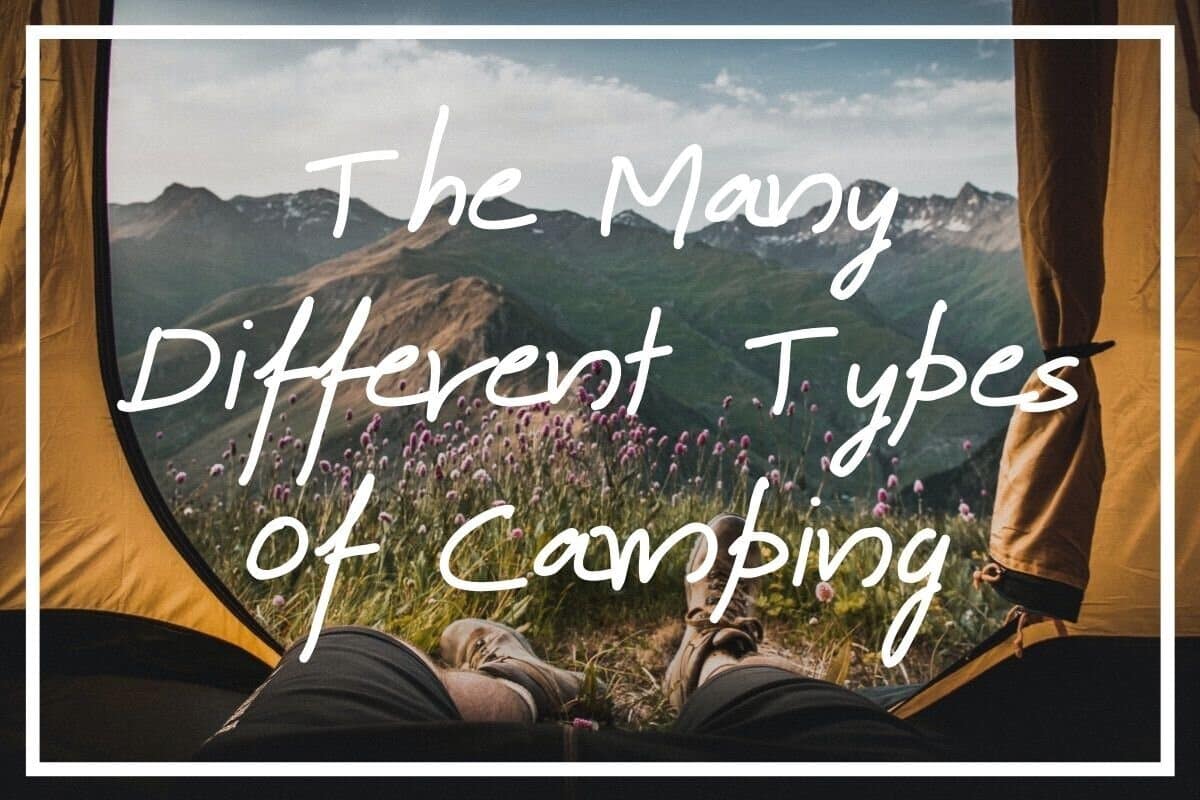
Wondering about the different types of camping? I hope this list helps!
What comes to mind when you think about camping?
Sleeping under canvas? Telling your kids scary stories around the campfire?
Toasting marshmallows and making s’mores? How about staring up into the vastness of the night sky as you sink a beer or two with friends?
Whatever the case, I’m sure you’ll agree that nothing beats it!
Camping’s just one of those activities that nourishes your soul.
And one of the coolest things about it is that there are all sorts of different types of camping to enjoy. The basic process of spending the night in nature stays the same, but there are definite sub-categories and camping styles that alter the experience in significant ways.
Want to learn all about them so you can pick the perfect type of camping for you?
Check out this (by no means definitive!) list of 15 cool ways to camp.
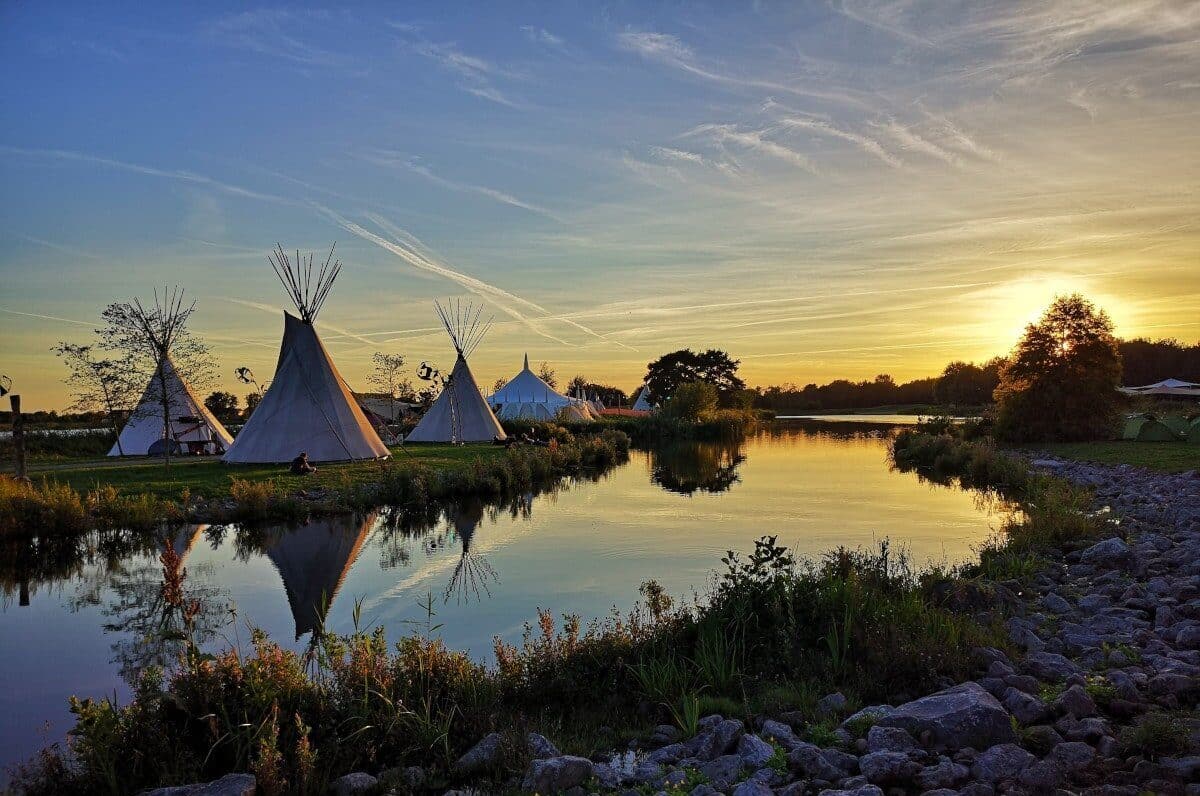
Ready to learn all about the different types of camping? Here we go…
Related Posts You Might Like
- How to Waterproof a Backpack
- How to Boil Water Camping
- How to Attach a Sleeping Bag to a Backpack
- The Best Sleeping Bags Under $100
- The Best Instant Tents for Camping
- The Best 12-Person Tents
- The Best Backpacks for Survival
- Ultimate Guide to Outdoor Peeing
15 Different Types of Camping
If you love the outdoors and sleeping under stars, then the type of camping you choose doesn’t really matter! They’re all awesome ways to ditch the creature comforts of home and spend some time in nature instead.
There’s no harm in knowing your options though! With that in mind, here are 15 different camping styles to choose from (complete with their pros and cons).
1. Tent Camping
Tenting camping is the basic type of camping that we’re all familiar with. It’s what comes to most peoples’ minds when they hear the word ‘camping’!
You head to a campsite, pitch your tent, and spend a few nights revelling in the novelty of sleeping outdoors.
The spot itself could be anywhere (beaches, parks, wooded areas, etcetera), although it’s almost always a bona fide site where you pay to stay. There might be basic amenities, such as communal cooking areas and shared bathrooms.
Fancier places even offer entertainment options to attract paying campers, including swimming pools, volleyball courts, TV rooms, and so on!
All told, tent camping’s an ideal introduction to the practice that makes for an awesome holiday with loved ones. If you’re after less comfort and more adventure, though, I’d look to other options on this list.
2. Backpacking
It’s up for debate whether or not backpacking’s an actual type of camping. But there’s no denying that camping’s a fundamental part of the process!
Backpacking involves slinging your gear into a backpack and hitting the trail for days, weeks, or months on end. Think of it like overnight hiking, where you’re trying to be as self-sufficient as possible and break away from civilization for a while.
You’re out in the sticks, spending your days walking through beautiful terrain, and then camping each night.
Whether you’re on a legitimate campsite or boondocking (more on this later) is up to you. Likewise, you don’t have to be in a tent; some people opt to sleep in bivvy bags or hammocks instead (both of which I’ll talk about in a bit).
3. Glamping
Glamping (AKA “glamorous camping”) is the perfect option for anyone who wants a luxurious overnight experience in the great outdoors.
Think large, spacious, stylish tents (or cabins) with luscious rugs, warm low lighting, and heating systems. Oh, and it’s all sorted out for you. Turn up at the glamping site and everything’s ready and waiting, similar to a hotel…just outside.
Now, nobody goes glamping to have an adventure. But if you’re an avid camper who fancies a dose of indulgence, then it’d make a fun alternative to your usual trips.
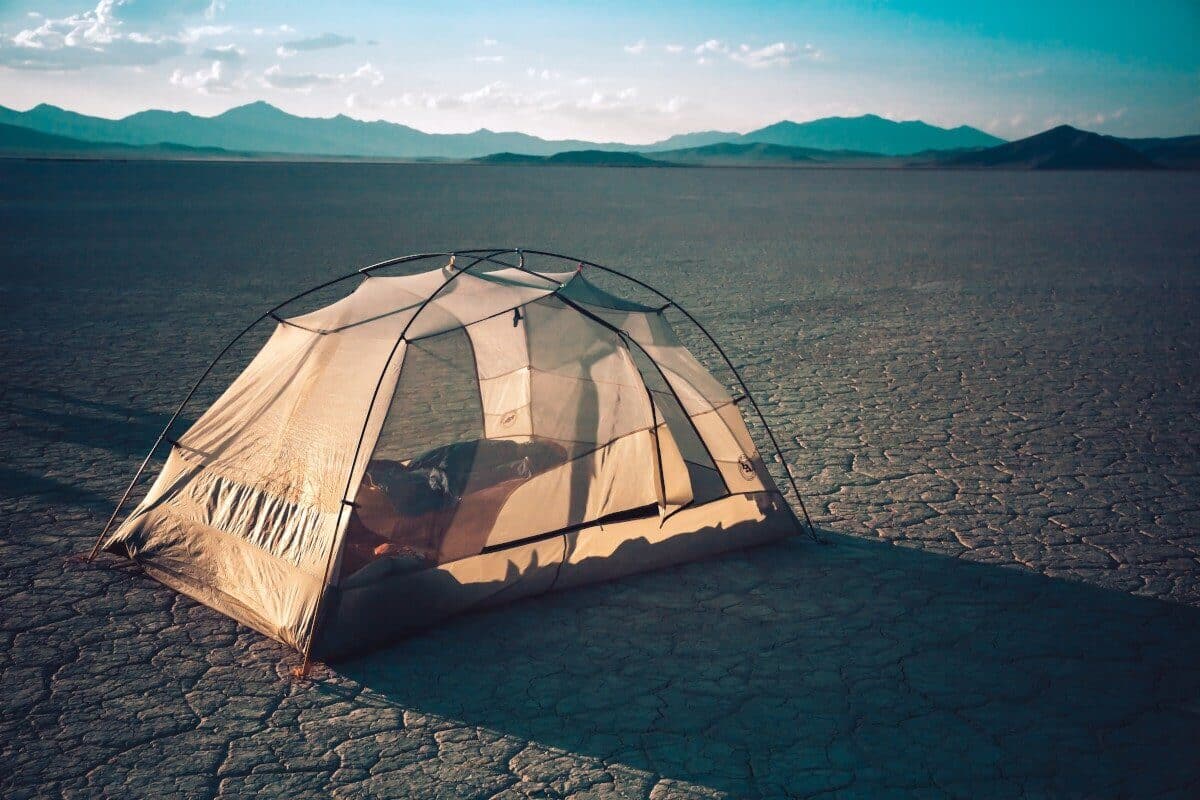
Want to learn how to survive in extreme situations? Survival camping could be the perfect camping style for you to try.
4. Survival Camping
Survival camping’s exactly what it sounds like:
Spending days and nights in difficult conditions and extreme environments, learning how to survive!
You might be on a special course and have a guide to show you the ropes. Either way, you’ll be hunting and gathering food, making shelters from available resources, and learning how to handle emergency situations along the way.
Now, for hard-core campers who regularly head out into the wilderness, so-called survivalist camping is just plain old camping!
You’re used to fending for yourself in extreme conditions, covering tricky terrain, and dealing with challenges every step of the way.
For everyone else, though, it’s a different category of camping altogether! Expect discomfort, hard work, and bucket-loads of character building.
5. Wild/Free Camping (Boondocking)
Free camping (otherwise known as “wild camping”, or “boondocking”) is one of my favourite types of camping.
Unlike tent camping, where you pay to stay at an official campsite, you pitch your tent (or hammock, or bivvy) anywhere.
You might be in a national park, up a mountain somewhere, or in a glacial valley. If the conditions allow it, and the rules permit it, you can set up shop for the night and sleep/wake up in some of the most outrageous places imaginable.
Rule number one of free camping? Leave no trace. In other words, clean up after yourself and leave the site exactly as you found it.
That means no trash, no food scraps, and definitely no human waste of any kind left behind.
As far as benefits go, this is wild, unrestricted camping with none of the hustle, bustle, and noise you experience at actual campsites.
However, there are no amenities available, no and rules that sometimes forbid free camping (not to mention the ensuing risk of being caught if you decide to flout them).
6. Bivvy Bag Camping
Think of bivvy bags as a cross between a sleeping bag and a tent. They come in a variety of shapes and styles, but the general principle’s the same:
It’s a one-person waterproof sack that sits directly on the ground. Some models have poles that create a frame for space; others simply lay flat. You can then slip a sleeping mat and bag inside for extra warmth.
Bivvy bags are ideal when you’re camping alone, travelling light, and/or want a convenient sleeping solution that involves zero set-up. The downsides?
There’s no space for anything but sleeping (for the same reason, they may also feel too claustrophobic for some people).
You can also expect condensation to cause trouble inside and potential waterproofing issues in serious downpours.
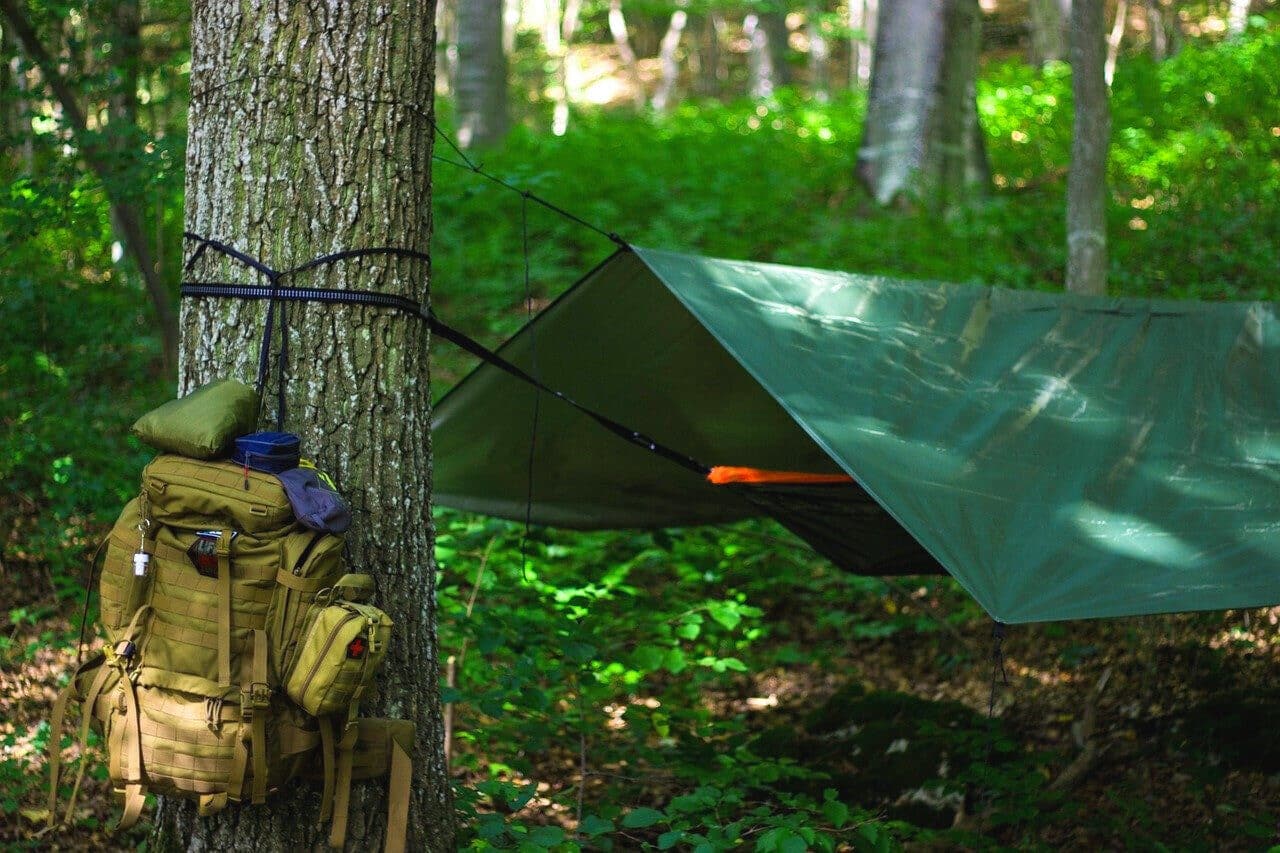
Together or separate, tarps and hammocks provide awesome ways to camp!
7. Tarp Camping
Tarp camping’s as simple as it gets. Whether you’re wild camping or on a paid site, all you have for shelter is a waterproof tarpaulin and either some twine or pegs to pitch it!
As you’d expect, it’s super lightweight and compact, making this type of camping ideal for ultralight backpackers.
And, when you know how to set it up properly, tarps also offer versatile and (surprisingly) effective protection from the elements.
Here’s a great video explaining 15 ways to use a tarp as a shelter:
8. Hammock Camping
Hammock camping’s another personal favourite. As the name suggests, this camping style involves spending nights outdoors in a hammock.
Far lighter than lugging a tent and poles around, hammocks provide a comfortable night’s sleep and take up minimal space in your backpack.
Of course, you’ll need some trees around (and they’re best used on dry summer evenings), yet you really can’t beat swinging gently in the breeze and falling asleep beneath a canopy of stars.
In colder, inclement conditions, you might also need a:
- Hammock underquilt,
- Sleeping bag,
- Hammock tarp, and
- Hammock bug net (to keep the insects at bay).
9. Winter Camping
Most of us restrict our camping trips to the warm and sunny months of spring and summer.
The days are long, the nights are short, and the heat in the air means you don’t need expensive technical equipment to prevent the cold from causing trouble.
However, 4-season camping (otherwise known as winter camping) is definitely possible too. It’s ideal for adventurous people who want to experience nights under canvas in wild and snowy weather. The only issue(s)?
You’ll have to pack high-quality gear (including a 4-season tent, a thick sleeping bag, a sleeping pad, and warm clothes), none of which is small, light-weight, or cheap.
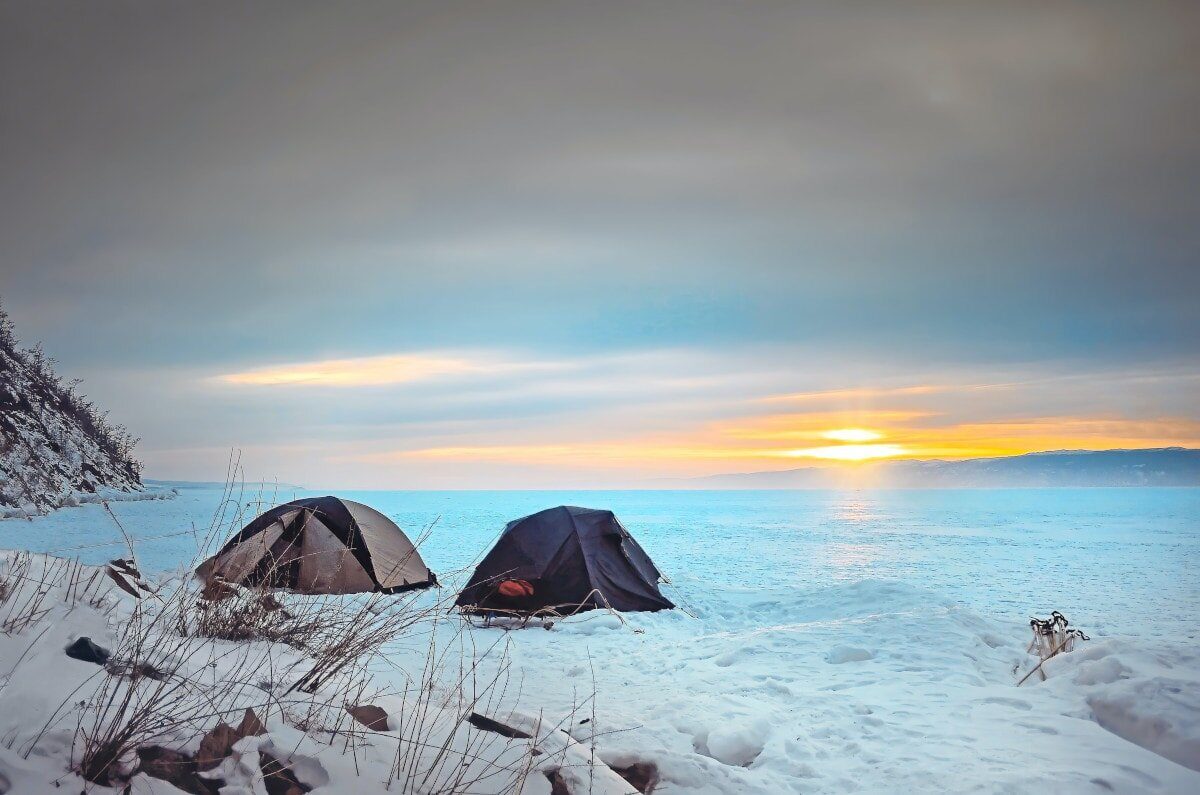
Want to try camping in the cold? Winter camping will be another type of camping to sink your teeth into!
10. Bike, Motorcycle, and Kayak Camping
Imagine travelling overland on a bike or motorcycle, or across the water by kayak.
You’d have all of your gear in panniers and/or on your back. Then, whenever you’ve finished for the day, you’d find somewhere to set camp, remove the tent (or hammock, or bivvy) from your pack, and set up shop for the night!
It’s a bit like backpacking meets wild camping, but with a transportation-related twist.
You’d experience unbridled freedom and total control over where you slept. At the same time, (if you decided against paid campsites) you’d go for days without amenities and may struggle to find appropriate places to pitch a tent.
11. RV/Van Camping
Campervans and recreational vehicles (RVs) are two hugely popular ways to both travel and camp. Let’s start with the RVs…
They’re homes on wheels, complete with a kitchen, bathroom, and space to chill out alongside the bedroom!
You’ll pay a lot of money (especially for the biggest, newest, and grandest ones) for the privilege, but the amenities on offer make RVs ideal for longer-term camping. You’ll enjoy the creature comforts of home and the freedom of being able to go anywhere you want.
Campervans are like mini RVs with fewer amenities. They’re also my dream form of transport.
Van-life is simple living, with just enough space for a bed in the back, a basic camp kitchen, and not a lot else!
What you lack in luxury you make up for in flexibility and cost-effectiveness though. Unlike RVs, the size of vans means you can park up almost anywhere and get a good night’s sleep- often without having to pay for official campsites.
12. Car Camping
Car camping’s what happens when you go on a big camping trip with your friends and/or family.
You load up the car/truck with food, drinks, and gear, and then drive to the campsite! Thanks to roads that lead right up to it, you don’t have to park miles away and hike in. You simply take your car onto the site itself.
From there, you decide whether you want to pitch your tent or sleep in the vehicle instead.
Just like tent camping, there are often sheltered communal areas, including spaces for cooking, showering, and hanging out under a cover.
Super convenient, car camping’s great when you’re taking your kids and/or have lots of stuff you want to bring along for the trip. However, you’ll also pay more to bring your vehicle onto the site and have lots of setting up/packing away to do too.
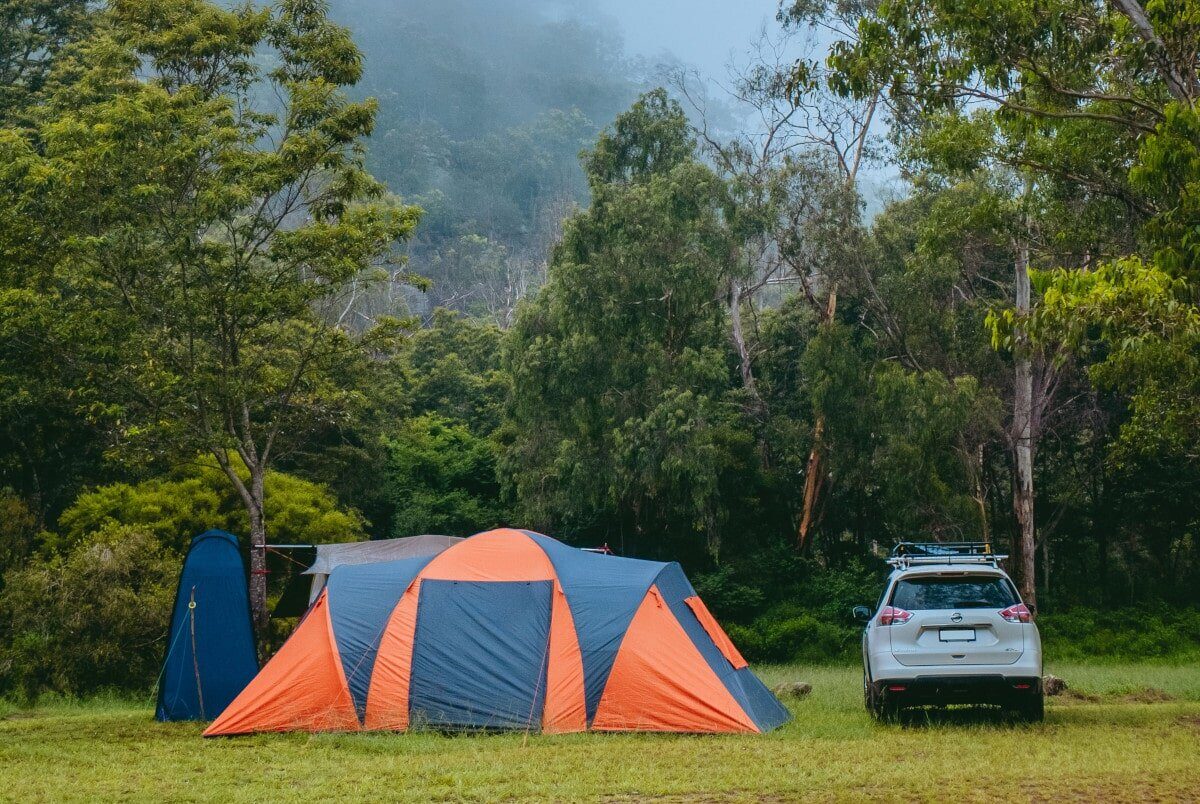
Car camping’s a convenient camping style for big family trips where you’re transporting lots of people and gear!
13. Trailer Tent Camping
A convenient twist on typical car camping, trailer tents are convenient, hassle-free contraptions that are hugely popular around the world.
Like any other trailer, you connect them to the back of your vehicle and pull them along behind it.
Unlike other trailers, though, they have a tent inside that folds out whenever you need you need to set up camp. Tow the trailer onto the campsite, disconnect it from your vehicle, unclip the cover, and then unfurl the tent as per the instructions.
What’s cool is that the tent and trailer are a package deal. It’s not like you remove the tent and then set it up separately. They’re connected; the trailer becomes part of the tent’s layout/setup.
Aside from the general convenience involved, a key advantage of this type of camping is that it saves space inside your vehicle.
You don’t have to load a massive family tent into the trunk alongside everything else you’re taking along! The downsides? Trailer tents aren’t cheap and can only be used on sites where you can take the car.
14. Rooftop Tent Camping
When I was travelling in Australia a couple of years ago, anyone who didn’t have a campervan seemed to have a rooftop tent. It seemed like the perfect setup too:
They’d have a big 4×4 with the tent attached to a rack on the roof.
When they were driving, it’d be folded up and zipped away into a compact box. Then, when they arrived at a campsite, they’d park up somewhere flat, unzip the box, and fold out this epic tent; a ladder would extend down from the entranceway, providing (relatively) easy access.
It seemed like ultimate freedom: accommodation wherever you wanted to park up! Similar to the trailer tent, they’re also convenient to erect and great for space-saving inside the vehicle.
Nevertheless, I can see a couple of disadvantages to rooftop tent camping.
First, that ladder could be awkward to get up and down at night, especially when it’s pitch black and you’re half asleep.
Second, the size is somewhat restrictive, with enough space for two people max. You also need a vehicle that’s big/strong enough to handle the weight of both the tent itself and any people sleeping inside it.
15. Overlanding
Overlanding has skyrocketed in popularity in recent years. And, to be fair, I’m not surprised…
It sounds pretty awesome.
It’s a self-sufficient-4-wheel-drive-off-roading-survival-adventure where the primary goal’s exploration! You cross rugged, wild terrain in your 4×4, traversing hairy landscapes purely for the sake of it.
From food and water to shelter and survival equipment, you carry everything you need in the truck.
Accidents and mishaps? It’s part of the fun and totally up to you to sort out!
Enjoy These Camping Styles
There you have it, then: an introduction to 15 different types of camping.
As you can tell, not all camping’s made equal! Contrary to what many people think, there are countless ways to spend the night outdoors and experience the myriad benefits of sleeping under the stars. Each type of camping has its unique set of pros and cons too.
Now I’d love to hear from you? Which of these camping styles sounds best to you? Drop a comment below to let me know.